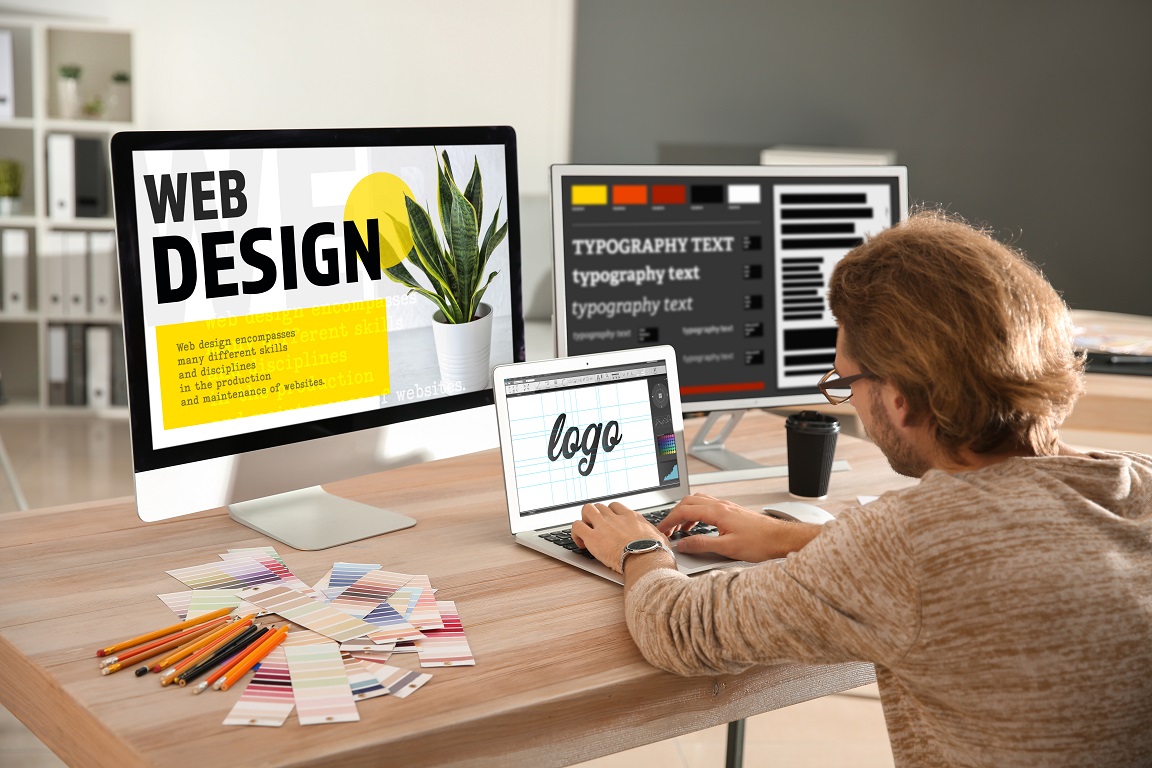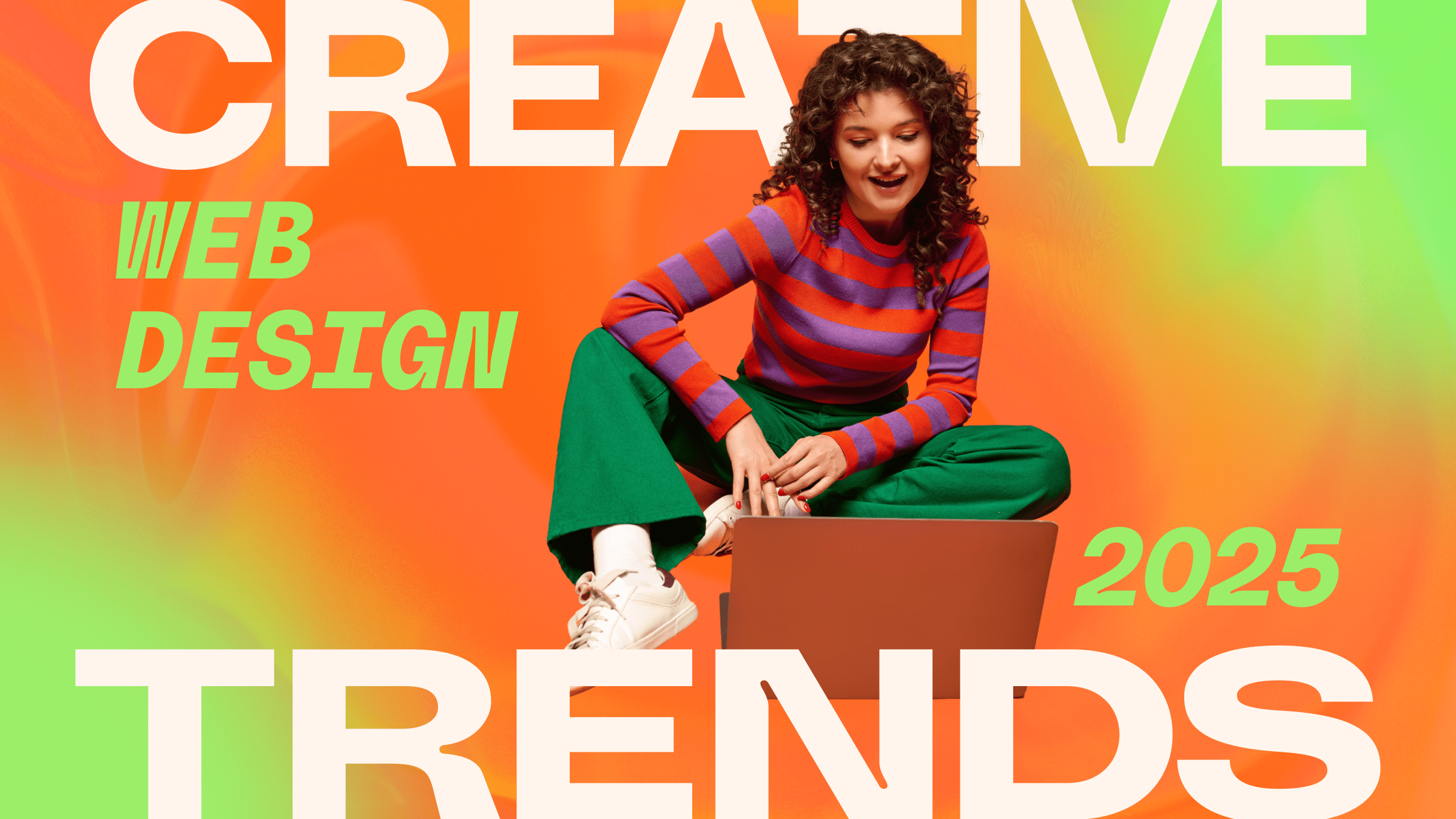Professional insights on creating engaging visuals from an agency for web design
Wiki Article
The Relevance of User Experience in Reliable Web Design Techniques
User experience (UX) works as a cornerstone in effective web design approaches. It forms exactly how individuals connect with a website, influencing their fulfillment and chance of returning. A well-designed UX can improve involvement through intuitive navigation and responsive designs. Nevertheless, neglecting these facets may lead to aggravation and raised bounce rates. Understanding the intricacies of UX is essential for developers aiming to produce engaging electronic experiences that reverberate with diverse target markets. What elements absolutely drive successful user involvement?Recognizing User Experience and Its Influence On Layout
Although user experience (UX) is commonly regarded as a plain facet of web design, it fundamentally shapes how individuals engage with an internet site. UX encompasses all elements of the user's communication, including functionality, availability, and general contentment. A favorable UX promotes interaction, urging customers to explore the website and return in the future. Conversely, a negative experience can result in frustration, resulting in high bounce rates and lost chances for conversion.Style elements like design, navigation, and material organization play crucial duties in shaping this experience. Efficient UX style prepares for user demands and preferences, making certain that information is aesthetically appealing and conveniently available. Furthermore, comprehending user actions via analytics can give valuable insights, notifying layout decisions that enhance use. Inevitably, an extensive understanding of UX permits developers to produce websites that not just attract individuals yet likewise advertise meaningful interactions that straighten with company objectives and user expectations.
Key Principles of Reliable User Experience
Reliable user experience rests on several essential concepts that enhance web site capability and engagement. User-friendly navigating design, responsive design fundamentals, and the importance of aesthetic power structure are vital aspects that add to a smooth interaction in between users and web content. Comprehending these concepts permits designers to create even more accessible and user-friendly electronic environments.User-friendly Navigating Design
When users experience a website, user-friendly navigation style works as a crucial portal to their overall experience. Reliable navigating allows users to effortlessly situate the details they look for, improving their interaction with the site. Trick concepts consist of clear labeling, logical company, and consistent placement of navigation elements. Labels ought to be simple, permitting customers to anticipate the material they will find. A well-structured hierarchy aids customers recognize the partnership in between different sections, leading them via the web site perfectly. Furthermore, responsive food selections and conveniently available links add to a fluid experience across tools. By focusing on user-friendly navigation, developers can considerably decrease user disappointment and boost interaction, ultimately cultivating a positive perception of the internet site and its material.Receptive Design Fundamentals
A well-structured navigating system naturally results in the demand for a receptive format, which is necessary in today's varied digital landscape. A receptive design guarantees that websites feature effortlessly across numerous gadgets, including desktop computers, tablets, and smart devices. This versatility improves user experience by permitting material to be visually coherent and easily obtainable, despite display size. Secret principles of receptive layout include fluid grids, versatile images, and media inquiries, which promote excellent viewing. In addition, prioritizing touch-friendly aspects boosts interaction on mobile devices. By applying a responsive design, developers can accommodate individuals' demands, minimize bounce rates, and rise engagement. Eventually, a well-executed receptive style cultivates a positive user experience, urging visitors to discover the website additionally.Aesthetic Power Structure Significance
Aesthetic hierarchy plays an essential role in guiding customers via a web site, making sure that essential info captures their focus. By purposefully utilizing size, shade, spacing, and comparison, developers can create a clear path for customers to adhere to. Bigger aspects typically draw the eye, indicating their significance, while contrasting colors can highlight contact us to action. Additionally, regular positioning and grouping of relevant material improve comprehension, making navigating user-friendly. Efficient use of aesthetic hierarchy not only improves usability yet also sustains the general visual of the site, cultivating a favorable user experience. When customers can conveniently determine one of the most important details, they are more likely to engage with the material, leading to boosted contentment and interaction with the site.The Role of Usability in Web Design
Functionality plays an essential role in web design, especially via navigating simplicity and adherence to ease of access criteria. Efficient navigating improves user satisfaction by enabling site visitors to discover details rapidly and with ease. Conference access standards ensures that all individuals, no matter of their capacities, can effectively interact with the site.Navigation Simplicity
Simplicity in navigation stands as a cornerstone of efficient web design, considerably affecting user experience. A structured navigating system permits customers to locate details swiftly and intuitively, minimizing irritation and improving complete satisfaction. Clear labeling and rational framework are essential elements, guiding users effortlessly via the internet site. Redundant web links or excessively complicated menus can disorient users, causing raised bounce prices. Furthermore, mobile responsiveness should be thought about, guaranteeing navigation continues to be uncomplicated throughout devices. Reducing and prioritizing crucial web pages clutter even more sustains user interaction. Reliable navigation not just cultivates a positive experience but likewise encourages users to explore the website extra completely, eventually bring about higher conversion rates. In this regard, navigating simplicity works as an important consider the overall performance of web design strategies.Accessibility Requirements
User engagement is greatly improved when sites comply with ease of access standards, guaranteeing that all users, despite their abilities, can browse and engage efficiently. Compliance with these requirements not only widens the target market yet likewise enhances overall user fulfillment. Easily accessible layout incorporates attributes such as text options for photos, keyboard navigation, and enough color comparison, which facilitate usage by people with disabilities. In enhancement, applying these standards can positively affect seo (SEARCH ENGINE OPTIMIZATION) by improving site structure and quality. As web design evolves, prioritizing availability comes to be vital in promoting a comprehensive electronic environment. By embracing these standards, designers add to a much more fair net, ultimately driving user loyalty and interaction.Value of Responsive Layout for User Involvement
As customers progressively access websites through a range of gadgets, the relevance of responsive style ends up being paramount for engaging users efficiently. Responsive style warranties that an internet site adjusts effortlessly to various display dimensions, offering a perfect watching experience no matter the device used. This versatility improves user involvement by assisting in less complicated navigation and interaction with material.When individuals encounter an internet site that is responsive, they are most likely to stay much longer, discover better, and return in the future. A well-designed receptive layout reduces the disappointment commonly related to zooming and scrolling on smaller screens, therefore lowering bounce rates. Additionally, responsive design can favorably affect online search engine positions, as internet search engine prioritize mobile-friendly websites. In today's electronic landscape, where mobile use remains to climb, applying responsive layout is not simply useful, but essential for keeping user engagement and ensuring a favorable experience across all gadgets.
Enhancing Load Times for Better User Satisfaction

To improve lots times, internet developers need to focus on maximizing images, leveraging browser caching, and lessening HTTP requests. Furthermore, using Web content Distribution Networks (CDNs) can expedite material distribution by dispersing it across various geographical areas. Simplifying code, such as pressing CSS and JavaScript documents, better adds to much faster packing rates.
Inevitably, a dedication to enhancing tons times not just improves user fulfillment however likewise strengthens brand name commitment and improves the chance of repeat brows through. A swift, seamless experience is vital for retaining customers and fostering positive interactions.
The Impact of Visual Pecking Order on User Interaction
Visual hierarchy serves as an essential element in leading user communication on a web site. By arranging web content in such a way that prioritizes info visually, developers can affect how customers browse and engage with a website. This hierarchy is developed through numerous style techniques, consisting of size, contrast, shade, and spacing. As an example, bigger font styles or bold shades accentuate vital aspects, such as calls to action or headings, while restrained shades and smaller sized font styles can show subordinate info.Effective aesthetic power structure helps customers rapidly determine what is essential, decreasing cognitive lots and boosting usability. It enables instinctive navigating, making it much easier for users to discover what they need without stress. As users communicate with a web site, a well-structured aesthetic power structure fosters a much more enjoyable experience, ultimately leading to higher interaction and conversion rates. Designers need to focus on these concepts to produce an user-centered and effective web atmosphere.
Determining User Experience: Tools and Techniques

Frequently Asked Questions
Exactly How Can I Boost My Website's User Experience on a Budget plan?
To boost a website's user experience on a budget plan, one web design company can maximize page load speed, streamline navigating, carry out responsive style, boost material clarity, and gather user comments for continual refinements, ensuring a rewarding site visitor experience.What Are Usual User Experience Mistakes to Avoid in Web Design?
Typical user experience errors in web design consist of cluttered formats, inadequate navigating, slow-moving filling times, absence of mobile responsiveness, neglecting availability, irregular branding, and falling short to prioritize user feedback - agency for web design. Each can considerably impede overall site effectiveness
Just how Usually Should I Update My Internet Site for Better User Experience?
Web sites must be updated frequently, ideally every couple of months, to keep optimal user experience. Frequent updates help address use concerns, freshen web content, and adjust to changing user demands, making sure the site remains engaging and pertinent.
Can User Experience Influence SEO Rankings on My Web site?
User experience can substantially impact search engine optimization positions, as internet search engine focus on sites that provide seamless navigating, quick loading times, and engaging content. A positive user experience can result in reduced bounce rates and higher search exposure.What Duty Does Access Play in User Experience Design?
Access plays a necessary function in user experience style by ensuring that all individuals, no matter abilities, can browse and engage with a website effectively. This inclusivity boosts overall complete satisfaction and engagement amongst varied customers.User experience (UX) is commonly viewed as a simple element of internet layout, it basically forms how users communicate with a website. User involvement is substantially boosted when internet sites stick to availability requirements, making sure that all individuals, regardless of their abilities, can navigate and interact efficiently. Determining user experience (UX) is vital for comprehending exactly how efficiently an internet site satisfies the requirements of its individuals. Additionally, usability testing, where genuine users browse the website while onlookers note difficulties, offers straight responses on user experience. Typical user experience errors in web layout consist of messy layouts, inadequate navigating, slow-moving loading times, lack of mobile responsiveness, overlooking access, irregular branding, and stopping working to prioritize user responses.
Report this wiki page